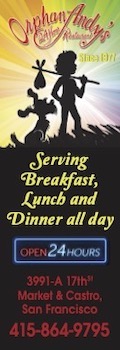Gale Wilhelm: Intimate Sadness and Joyous Love

By Dr. Bill Lipsky–
In her groundbreaking A Complete, Cumulative Checklist of Lesbian, Variant and Homosexual Fiction (1960), the author Marion Zimmer Bradley wrote that We Too Are Drifting was “probably the major novel of the thirties to deal with lesbians” and “perhaps the best of all time.” Not only was the story of the “boyish, yet feminine Jan Morale” told “with fairness, restraint, and skill,” she noted, it “is one of the dozen or so books on this entire list to display not only some, but exceptional literary merit.”

When the book was published in 1935, critics agreed. During an era when homosexuality was rarely mentioned in either serious or popular culture—and rarely with approving words—it was praised by important, influential publications, including The Nation, The Boston Transcript, and Saturday Review of Literature. For The New Republic it was “a revelation of the ways lesbians regard their own affairs.” The New York Herald Tribune wrote it was “better than The Well of Loneliness.”
Reviewers also had kind words for the book’s author, Gale Wilhelm, whom they recognized as a major new talent. Born on April 26, 1908 in Eugene, Oregon, she was living in Berkeley when We Too Are Drifting was accepted for publication, but left for New York City soon after to work as associate editor of Literary America. Her next book, No Letters for The Dead, the story of a married woman who becomes a prostitute to support herself and the man she loves, appeared soon after.
For her third novel, Torchlight to Valhalla, published in 1938, Wilhelm returned to love between women. As Kirkus Review explained, the book told of “the period of emotional stagnation through which a girl who has lost her adored father goes, before finding herself. A man, deeply in love with her, struggles against the barrier of her indifference, thinks he has broken through, only to find that another girl has come on the scene and captured the moment of emotional release for which he had waited.”
Wilhelm describes that moment, when we realize who we are and find the love that will complete us, with the great lyrical beauty it deserves. “A stillness went around them,” she writes, “and Morgen leaned across this stillness to touch the hands and face she loved. That was a moment made wholly of tenderness … . I was waiting. I didn’t know what I was waiting for, I didn’t even know I was waiting, but when I saw you. I knew.”
Kirkus Review shared: “This young writer is doing some of the most interesting work being published in a rather stylized modern vein,” but it still advised its readers that, because of the “suggestion of homosexual content,” it was “not a book for conservatives, in spite of the delicate handling.” Whether or not Wilhelm read these comments, her next three novels, published by William Morrow, presented problems only of heterosexuality, with much less success.

By the time Torchlight to Valhalla appeared in 1938,Wilhelm had returned to the Bay Area, then moved to Oakdale, California, the self-proclaimed “Cowboy Capital of the World,” where she lived for the next ten years with Helen Page and her mother, Mary. A reporter and manager of the Oakdale office of the Stockton Record, Helen profiled Gale for the paper two years later when Bring Home the Bride, her fourth novel, was published. Her portrait presented a woman who clearly knew who she was.
“She leads the discretely boisterous life of as country gentlewoman,” her partner wrote, only hinting at what then could not be stated openly. “Her clothes are simple past severity … . She knows, more than she knows any other thing, that things are not what they seem, that the conventional aspect of things can be the least true … . And she has absorbed the great truth … that ‘normal’ is an abstraction, that there is no such thing as a normal person.”
In 1948, Wilhelm returned to Berkeley, where she lived, with her partner Kathleen Huebner, until her death on July 11, 1991. She never published another novel, but her earlier books were reprinted in the 1950s and 1960s, an era that the writer and publisher Barbara Griercalled the “Golden Age of Lesbian Pulp Fiction.” Sadly, they were no longer being presented as serious works by a talented author, but soldat kiosks in drug stores and airports as popular, melodramatic, even salacious entertainments.
Somehow their excellence survived the exploitation. In 1964, The Ladder, then edited by Barbara Gittings, summed up the value We Two Are Drifting had for women. “Have you ever been so happy that you had to curl your fingers into fists well hidden in your jacket pocket to keep from shouting the joy of your love to the world? If so—and if not—you’ll want this book, a love story, a real love story.”
Many agreed. When Grier’s Naiad Press, which would become the world’s largest publisher of books about lesbians, brought out new editions of We Two Are Drifting and Torchlight to Valhalla in the 1980s, they finally were restored to the audience and dignity they deserve. Both are easily available today.
Whether the women in Wilhelm’s novels ultimately found happiness or not, they learned that the tenderness, compassion, and desire they felt for each other were natural and normal for them. “In a moment I’m going to turn on the light and we’ll be two people in a room looking at each other and wondering why on earth they were afraid of the dark,” she wrote in We Two Are Drifting. No one has ever stated better that love is beautiful, not shameful, and should be celebrated, not hidden away.
Bill Lipsky, Ph.D., author of “Gay and Lesbian San Francisco” (2006), is a member of the Rainbow Honor Walk board of directors.
Faces from Our LGBT Past
Published on May 18, 2023








Recent Comments